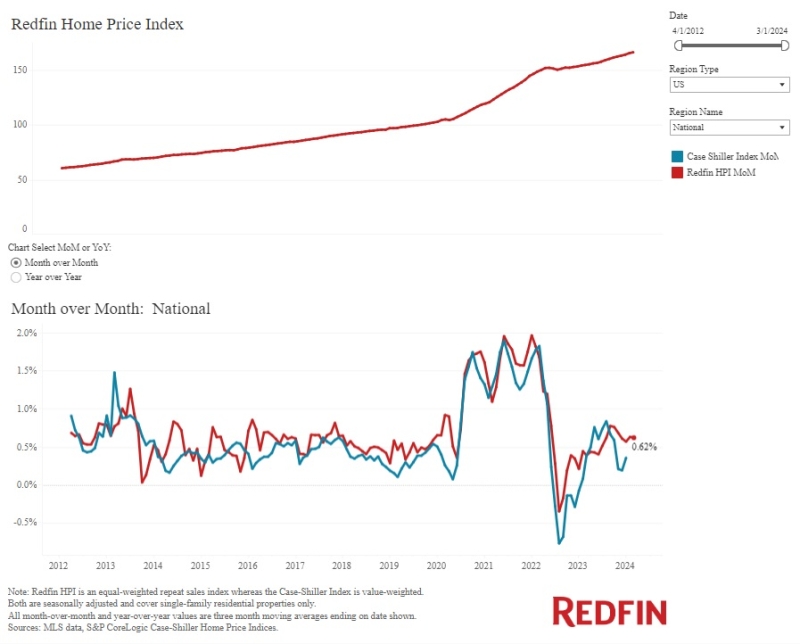Advertisement
Going for broker: success, solutions and the story of MILA Inc.
The sky didn't fall: Mortgage industry remains strong, despite dire predictionsGary SimpsonStatistics,2004,housing market
At the beginning of 2004, the future of the mortgage industry
appeared to be in a state of flux. The portents of doom were
everywhere: Fannie Mae predicted a drop-off in the mortgage
business of approximately 40 percent, warnings of a major shakeout
due to the end of the refi boom, an uncertain economic recovery,
impending government regulation, and finally, the prospect that
rising interest rates would burst "the housing bubble," with
disastrous consequences for mortgage brokers and the American
economy. This year was poised to be a banner year for the Chicken
Littles of the world. Well, 2004 is now more than halfway finished
and the sky hasn't fallen, just yet. The Federal Reserve Board
raised short-term interest rates by one-quarter on June 30, and
people are still buying homes. Job growth in the U.S. economy is
expected to be strong for the remainder of 2004, the U.S.
Department of Housing and Urban Development's proposed RESPA rule
has been withdrawn amid intense opposition, and a major shakeout of
the mortgage broker industry has yet to occur.
In fact, existing single-family home sales rose in May to the
highest monthly pace on record, increasing 2.6 percent to a
seasonally adjusted annual rate of 6.8 million units in May from a
level of 6.63 million units in April, according to the National
Association of Realtors (NAR). Sales activity for May was 15.8
percent above the 5.87 million units pace of May 2003; the previous
record was 6.68 million units in September 2003. The U.S. Census
Bureau reported that single-family housing starts increased from a
seasonally adjusted annual rate of 1.62 million in April to 1.64
million in May.
"Fundamentals are still very favorable for a vibrant market. In
part, the record results from a natural 'fence-jumping' by buyers
getting into the market after mortgage interest rates began to rise
at a sharper clip in April," said David Lereah, NAR's chief
economist. "This may be the last peak in home sales for a while and
existing-home sales are likely to be slower during the second half
of the year. Even so, they will remain at strong levels and 2004 is
on track to be a record."
The Mortgage Bankers Association's Weekly Mortgage Applications
Survey for the week that ended on July 2 indicated that the Market
Composite Index of mortgage loan applications jumped from 575 to
687 on a seasonally adjusted basis. On an unadjusted basis,
applications rose 19.2 percent on the week, but were down 34.1
percent from the same time in 2003. The Purchase Index rose from
435.4 to 500.9 on a seasonally adjusted basis, while the Refinance
Index climbed from 1386.9 to 1769.7. Refinances represented 35.8
percent of total applications, up from 33.4 percent the week that
ended on June 25, while adjustable rate mortgages accounted for
34.1 percent. According to Freddie Mac, the national average
commitment rate for a 30-year, conventional mortgage was 6.27
percent in May, up from 5.83 percent in April; it was 5.48 percent
in May 2003.
The Public Home Builders Council of America (PHBCA) issued the
following statement regarding the impact of the Fed's interest rate
increase on the country's largest housing markets:
"The PHBCA believes that housing demand will remain strong
throughout 2004, despite the Federal Reserve's move today [June
30], to raise the benchmark federal funds rate to 1.25 percent. The
demand for housing is being driven by demographics, land
constraints and job growth, among other factors, and not due solely
to interest rates, which remain at historically low levels. These
other factors include the competitive advantages of the large
builders, market share expansion, a long-term shift in supply and
demand fundamentals, and an increase in the diversity of housing
and financial products available to buyers."
As the U.S. economy picks up steam, residential mortgage
delinquencies and foreclosures began to decrease in the first
quarter of 2004. In June, the inventory of foreclosed residential
properties declined for the first time in 2004. There were 22,132
new foreclosed residential properties listed in the U.S. in June,
and such properties totaled 72,962 overall. In May, the overall
figure was 82,991.
"With the ongoing strength of the economy during the first
quarter of 2004, delinquency rates continued their fall from
post-recession peaks in the second quarter of 2003," said Douglas
Duncan, MBA's chief economist and senior vice president. "An
expectation of strong job growth for the rest of the year and
continued strength in the housing market bodes well for lower
delinquency and foreclosure rates in the upcoming quarters."
NAR chief economist David Lereah predicts that the unemployment
rate should fall to 5.2 percent by the beginning of 2005. And,
nearly three-fourths (71.6 percent) of real estate professionals
believe that commercial real estate activity will either strengthen
(35.8 percent) or remain the same (35.8 percent) within the next 12
months, according to the results of the first-annual Bryan Cave
Real Estate Executives' Forecast Survey. Only 26.9 percent believed
that real estate activity would weaken, indicating a sign of strong
confidence and optimism about the market.
While the pessimism over an uncertain economy that pervaded the
industry at the beginning of 2004 appears to have been replaced by
guarded optimism from industry professionals, there was good news
on the political front as well. As 2004 began, HUD's Proposed RESPA
Reform Rule was a wet blanket set to dampen the spirit of the
mortgage industry. It was proposed as way of simplifying and
lowering the costs of the mortgage process for American consumers.
The rule was sent to the Office of Management and Budget (OMB) in
Dec. 2003 for review before implementation. The mortgage industry
marshaled its forces to defeat the Proposed Rule, as HUD received
more than 40,000 letters during the 90-day comment period.
Congressional hearings were held on the matter, as the National
Association of Mortgage Brokers and other industry groups,
including American Land Title Association, MBA, NAR and the
National Association of Homebuilders all voiced their concerns
about the rule. Consumer groups, such as the Consumer Federation of
America, Consumers Union, International Union UAW, National
Association of Consumer Advocates, National Community Reinvestment
Coalition and the National Consumer Law Center, joined the chorus
of voices opposing the rule. In a study titled, "The Effect of
Mortgage Broker Compensation Disclosures on Consumers and
Competition: A Controlled Experiment," the Federal Trade Commission
indicated that the proposed rule was likely to harm, rather than
help, consumers and could reduce competition in the mortgage market
by placing an undue emphasis on broker compensation rather than the
actual cost of mortgage transactions. The FTC estimated that the
proposal could have cost consumers between $400-$800 million per
year. More than 200 members of Congress signed a letter authored by
Reps. Judy Biggert and Ruben Hinojosa that appealed to the OMB to
return the rule to HUD for re-proposal. Sen. Wayne Allard
threatened to hold up the confirmation of HUD Secretary Alphonso
Jackson. In the face of this mounting opposition, HUD decided to
withdraw the Proposed Rule, and is now consulting with NAMB and
other mortgage industry associations to formulate a new RESPA
reform proposal.
RESPA reform is dead, at least for 2004; the housing market
didn't collapse after the Fed raised rates; the economy is
recovering; and there is still a demand for homes among consumers.
The sky hasn't fallen, but the year isn't over yet. While RESPA
reform may be gone, there are several states adopting laws aimed at
predatory lending that could create a patchwork quilt of
legislation that has an adverse impact upon the mortgage industry.
Minorities are still underrepresented in the ranks of American
homeowners. U.S. Department of Labor work rules could substantially
increase costs for mortgage broker/owners. However, in light of the
industry's performance during the first half of 2004, these issues
don't conjure up the apocalyptic prophesies that seemed to infect
so much of the mortgage industry at the beginning of the year.
These difficulties seem to be mere hurdles that a now more
responsive federal government and the mortgage industry can work on
surmounting together.
And as for the future of the industry, "The housing industry is
well positioned for another decade of growth," according to Harvard
University's Joint Center for Housing Studies. The Census Bureau's
newly revised population estimates raised the Joint Center's
projected total household growth to 13.3 million between 2005 and
2015, up 1.1-two million from previous estimates.
About the author





